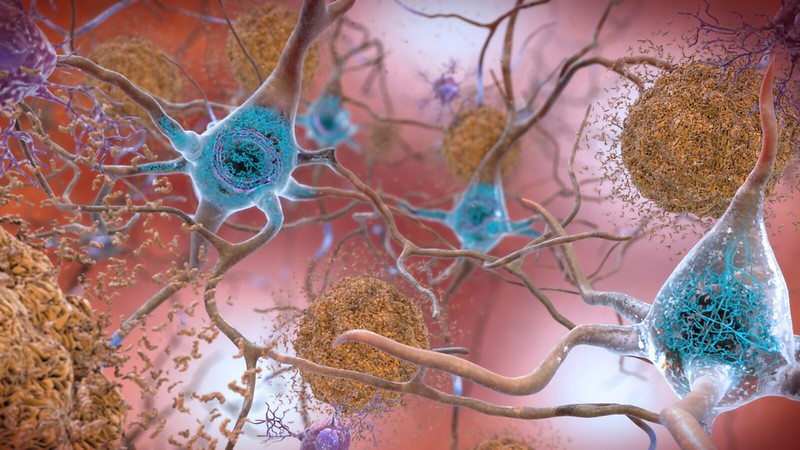Amyloid-beta plaques (brown) and tau protein tangles (blue). Credit: National Institute on Aging/NIH Investigative journalist Charles Piller’s latest book, Doctored: Fraud, Arrogance, and Tragedy in the Quest to Cure Alzheimer’s, came out in February. It details the work of Matthew Schrag, a neurologist at Vanderbilt University in Nashville, Tenn., and other sleuths who uncovered evidence of problems in hundreds of research papers about the neurologic condition. Most reviews and coverage have been positive, Piller said. But some Alzheimer’s researchers have criticized the book in reviews published in JAMA, The Lancet Neurology, and the website Alzforum, which hosts news and commentary…
-
-
Chronic stress can lead to increased blood pressure and cardiovascular disease, decreased immune function, depression, and anxiety. Unfortunately, the tools we use to monitor stress are often imprecise or expensive, relying on self-reporting questionnaires and psychiatric evaluations. Now a Tufts interdisciplinary engineer and his team have devised a simple device using specially designed floss that can easily and accurately measure cortisol, a stress hormone, in real time. “It started in a collaboration with several departments across Tufts, examining how stress and other cognitive states affect problem solving and learning,” said Sameer Sonkusale, professor of electrical and computer engineering. “We didn’t…
-
A gene that regulates the development of roots in vascular plants is also involved in the organ development of liverworts — land plants so old they don’t even have proper roots. The Kobe University discovery highlights the fundamental evolutionary dynamic of co-opting, evolving a mechanism first and adopting it for a different purpose later. When scientists discover that a gene is necessary for the development of a trait, they are quick to ask since when this gene has been involved in this and how the evolution of the gene has contributed to the evolution of the trait. Kobe University plant…
-
Otodus megalodon was the largest predatory fish in Earth’s history: Measuring up to 24 meters, it was longer than a truck with a trailer and weighed almost twice as much. Embedded in its jaws were triangular teeth the size of a hand, and its bite had the force of an industrial hydraulic press. It swam through the world’s oceans between 20 and 3 million years ago, frequently on the hunt for prey to satisfy a calorie demand as vast as its size: According to estimates, it required around 100,000 kilocalories per day. Science widely assumed that megalodon’s main calorie intake…
-
Flowers grow stems, leaves and petals in a perfect pattern again and again. A new Cornell study shows that even in this precise, patterned formation in plants, gene activity inside individual cells is far more chaotic than it appears from the outside. This finding has important implications for plant engineering, where scientists design artificial gene switches to control growth or behavior. Understanding how plants manage genetic “noise” could also inform research in other fields, from synthetic biology, where predictability is crucial, to research on cancer, where random gene activity can drive tumor evolution. The research published May 20 in Nature…
-
Most of us are familiar sloths, the bear-like animals that hang from trees, live life in the slow lane, take a month to digest a meal and poop just once a week. Their closest living relatives are anteaters and armadillos, and if that seems like an odd pairing, there’s a reason why. Today, there are only two sloth species, but historically, there were dozens of them, including one with a bottle-nosed snout that ate ants and another that likely resembled the ancestors of modern armadillos. Most of these extinct sloths also didn’t live in trees, because they were too big.…
-
As legally required by the European Union, sustainable fisheries may not extract more fish than can regrow each year. Yet, about 70 per cent of commercially targeted fish stocks in northern EU waters are either overfished, have shrunken population sizes or have collapsed entirely. So why does the EU continue to miss its sustainable fisheries targets, despite a wealth of scientific data and policy instruments? Researchers at GEOMAR Helmholtz Centre for Ocean Research Kiel and Kiel University examined this question using the well-explored seas of northern Europe as a case study, with a particular focus on the western Baltic Sea.…
-
Researchers at the Francis Crick Institute and UCL have analysed ancient DNA from Borrelia recurrentis, a type of bacteria that causes relapsing fever, pinpointing when it evolved to spread through lice rather than ticks, and how it gained and lost genes in the process. This transition may have coincided with changes in human lifestyles, like living closer together and the beginning of the wool trade. Borrelia recurrentis bacteria cause relapsing fever, an illness with many recurring episodes of fever, which is typically found today in areas with poor sanitation or overcrowding, such as refugee camps. It is a distant cousin…
-
As the ocean warms across its temperate regions, kelp forests are collapsing and turf algae species are taking over. This shift from dense canopies of tall kelp to low-lying mats of turf algae is driving biodiversity loss and altering the flow of energy and nutrients through reef ecosystems. It’s also fundamentally altering the chemical ecology of coastal ecosystems. New research in Science, led by researchers at Bigelow Laboratory for Ocean Sciences, has shown for the first time how turf algae release chemicals that can kill young kelp. That creates a feedback loop where more turf algae means more harmful chemicals,…
-
My phone buzzed just as I was finishing filming with the BBC Sky at Night crew for an episode about Mars, having spent the day immersed in the high-resolution panoramas returned by the Curiosity and Perserverance rovers. A text from a researcher wondered if I’d be around to comment on embargoed research from scientists in Cambridge who had ‘found new tentative evidence that a farway world orbiting a different star to the Sun may be home to life’. I guessed immediately we were talking about the group who, back in 2023, had published what the peer-reviewed paper described as ‘potential…


